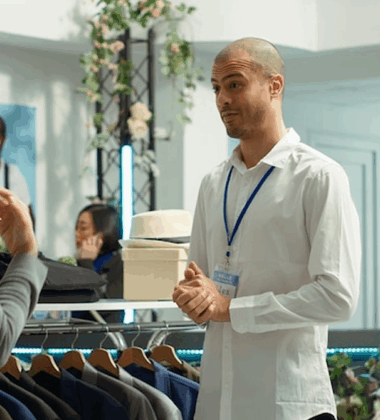As food and beverage expos evolve into multisensory showcases, one powerful truth is reshaping how brands engage their audience: taste alone is no longer enough. In 2025, the most memorable booths don’t just offer flavor—they deliver full, immersive culinary experiences designed to heighten emotions, enhance memories, and solidify brand loyalty.
At premier industry events like the Global Products Expo USA, exhibitors are discovering that when you combine sensory science, design thinking, and psychology, you can turn simple tastings into unforgettable moments that influence long-term purchasing decisions.
Why Immersion Works: The Psychology Behind Eating Experiences
Human memory is inherently multisensory. Behavioral psychologists have long demonstrated that we’re more likely to remember experiences that engage multiple senses, especially when those experiences are associated with food. This explains why a scent from childhood can instantly transport us to a long-forgotten dinner table or why music can enhance the perceived flavor of a dish.
For marketers, this represents a powerful opportunity. At crowded trade shows, traditional tasting booths may be quickly forgotten. But immersive environments—complete with coordinated lighting, spatial sound, narrative storytelling, and tactile interaction—are far more likely to leave a lasting impression.
Cognitive studies support this: food memory is stronger when the experience surrounding the food is emotionally charged or novel. A recent study from the Institute for Sensory Integration found that participants who sampled identical foods in an immersive booth remembered not only the flavor more clearly but were also 65% more likely to recall the brand a week later.
Immersive Culinary Experience: What It Looks Like on the Expo Floor
At the Global Products Expo USA, immersive booths are no longer outliers—they’re the draw. From edible walls and aroma-infused spaces to AI-personalized menus and kinetic dining tables, today’s exhibitors are rewriting the playbook on booth engagement.
Let’s look at some standout strategies shaping 2025’s food and beverage expos:
1. Thematic Story Rooms
Instead of a simple counter and backdrop, brands are building entire micro-environments that reflect their origin story, values, or ingredient source. A chocolate brand, for example, may design a “Cacao Forest” tasting room complete with misting canopies, rainforest sounds, and floor projections of indigenous farmers harvesting cocoa pods—placing the consumer inside the supply chain narrative.
2. Sensory Staging
Combining soft textures, controlled lighting, curated background scores, and scent diffusers, sensory staging primes visitors’ brains to receive food in a specific emotional context. This boosts perceived value and heightens memory encoding. One beverage startup used pulsing light and upbeat music synced to carbonation bubbles to make their sparkling adaptogen drink feel more energizing—leading to a 30% increase in sign-ups post-expo.
3. Custom Interaction Zones
Immersive booths often include interactive prep stations where consumers participate in mixing, garnishing, or plating their sample. This physical engagement builds a sense of ownership and heightens enjoyment. Combined with live narration from chefs or brand reps, these moments become core memories associated with the brand.
4. Digital Integration
AR menus, projection-mapped plates, and even VR farm tours are now accessible technologies for small and mid-sized brands. A rice company at a recent expo used tablets to let visitors “plant” and “harvest” their own grains virtually—then sample real dishes made from that crop. The result? One of the most shared activations on social media during the show.
The Strategic Value of Sensory Memory
This level of immersion isn’t just theatrics. There’s real business logic behind it. Consider the following metrics that brand teams and behavioral marketers are using to justify the investment in immersive culinary experience design:
- Brand recall increases by up to 70% when multiple senses are involved.
- Dwell time at immersive booths is 3x longer than average.
- Social shares and user-generated content increase by 55% in high-engagement installations.
- Follow-up conversion for immersive booth visitors outperforms standard booths by 40%.
These numbers confirm what expo veterans have long sensed intuitively: people remember how you made them feel more than what you told them.
Who’s Doing It Best? Expo Innovators to Watch
Some standout examples from recent shows in the U.S. and Europe include:
- Fermenta Naturals created a “gut garden” walk-through featuring scent-reactive walls and edible flowers to promote their probiotic line.
- Chef’s Code Collective built a silent-disco style tasting where each guest wore headphones with custom storytelling synced to bites.
- Tundra Grains turned their booth into a sensory snow lodge to communicate the purity of their Nordic grain origin story, complete with cool airflows and cinnamon bark aromas.
Each of these brands invested in immersive culinary experience design not as a gimmick, but as a business decision that aligned with product positioning, target audience insight, and long-term brand strategy.
Building One Yourself: Steps to Design an Immersive Culinary Experience
If you’re a food marketer, chef, or experience designer preparing for your next trade show, here’s a strategic approach to integrating immersion into your booth plan:
1. Define the Emotional Outcome First
Start not with “what can we build?” but “how should they feel?” Is your brand calming? Energetic? Luxurious? The emotion guides the sensory elements.
2. Pick Three Sensory Anchors
Choose the primary senses you want to target beyond taste—typically smell, touch, and sound—and tailor your booth’s design elements to support them.
3. Map the Visitor Journey
Design for flow: how someone enters, interacts, samples, and exits. Include a moment of transformation or discovery to anchor the memory.
4. Create a Shareable Element
Whether it’s a striking visual moment, a quirky soundbite, or an edible takeaway, design for social sharing and word-of-mouth buzz.
5. Train Your Team
Immersive experiences fail without human alignment. Train your booth staff not just to serve, but to guide and narrate the experience in a consistent tone.
Beyond the Booth: Lasting Brand Impact
The impact of immersive culinary experiences doesn’t end when the expo closes. Brands that successfully integrate sensory storytelling often find ripple effects in their marketing strategy, product packaging, and even retail activation.
For instance, one tea brand that launched an immersive “mindfulness tea cave” went on to redesign its store displays and influencer boxes to echo the same themes of serenity and reflection. Months later, they reported a 23% increase in repeat customers citing the expo as their first interaction with the brand.
This alignment between live experience and ongoing brand touchpoints builds stronger customer relationships, improves perception, and boosts loyalty. It also positions your team as a category leader willing to innovate on both flavor and feeling.
Conclusion: Why Immersive Culinary Experiences Matter Now More Than Ever
As trade shows become less about product sampling and more about brand storytelling, immersive culinary experiences are quickly becoming the most effective strategy for memorable engagement.
They don’t just offer food—they create connection. They don’t just impress—they imprint. And for food and beverage brands aiming to stand out in a competitive global marketplace, the ability to design emotion through experience may be the most important skill of all.
So if you’re preparing for the next major industry gathering—especially at flagship events like the Global Products Expo USA—consider this: what story do you want your visitors to taste, see, hear, and remember?





